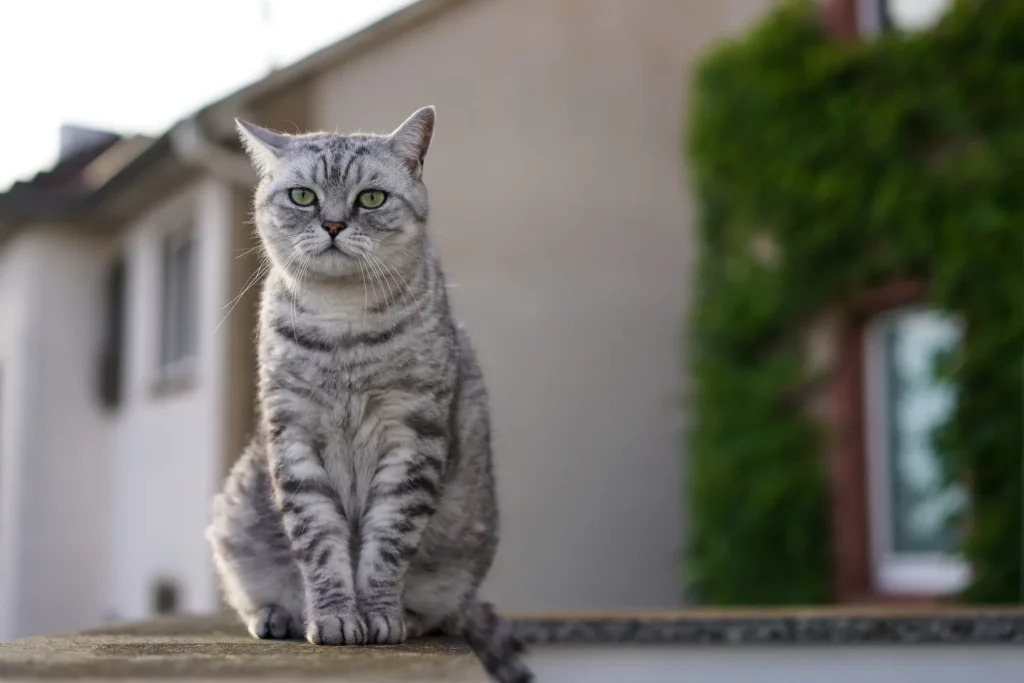Short-coated cats often enjoy the reputation of being “low-maintenance.” Their sleek fur doesn’t mat as easily as longhaired breeds, they rarely need baths, and they appear to manage their grooming all on their own. But beneath that glossy surface lies a layer of misunderstood needs. Many cat owners mistakenly assume that grooming routines are only necessary for fluffier feline varieties. However, short-haired cats are just as susceptible to grooming-related issues—especially when it comes to skin health, shedding control, and sensory comfort. These sleek companions may not have dramatic fur to detangle, but they do require strategic care to stay clean, healthy, and comfortable.
The Myth of the Self-Grooming Short-Hair
It’s true that cats are fastidious self-groomers. But that doesn’t mean they can maintain everything themselves. Cats with short, dense coats like the American Shorthair, British Shorthair, Burmese, and even mixed breeds carry oils, dander, and loose hair that can build up silently over time. These elements aren’t always visible, which makes them easy to ignore—until skin issues, excess shedding, or behavioral changes arise.
Unlike long-haired cats, where tangles act as an obvious cue for help, short-coated cats rarely show visible grooming neglect. That leads many owners to overlook subtle red flags: dull fur, greasy patches, dandruff, or increased licking. These signs all point to an undergroomed coat and a need for more regular, hands-on care. A proper grooming routine for short-haired cats doesn’t require hours of brushing or elaborate bathing rituals, but it does demand consistency, awareness, and the right tools.
Oil Buildup and Skin Imbalance in Short Fur
Short fur lies closer to the skin, meaning any imbalance in the sebaceous glands—those that produce natural oils—can quickly manifest. Cats that are overweight, aging, arthritic, or just less flexible might not groom every area evenly. When that happens, oil builds up in spots they can’t reach, leading to greasy fur, odor, or dandruff-like flakes. Some cats may even start scratching or licking excessively, trying to compensate.
These oil imbalances often develop gradually. You may notice areas around the base of the tail, spine, or behind the ears where fur appears flat, clumped, or slightly sticky. For cats with darker coats, oil buildup can go unnoticed until your fingers detect the residue during petting.
Left unchecked, these conditions can result in clogged pores, bacterial skin infections, or even hair loss. A weekly brush helps redistribute these oils evenly and prevents localized buildup. It also stimulates circulation and brings oxygen to the skin’s surface, creating a healthy shine.
Shedding Happens—Even With Short Hair
Many owners believe short-haired cats don’t shed significantly. Spend one summer with a sunbeam-loving tabby, and you’ll quickly realize that’s not the case. Shedding is a natural cycle tied to seasons, indoor climate control, and overall health. Without intervention, short hair can end up everywhere: on clothes, sofas, bedding, and even in your cat’s digestive system as hairballs.
Unlike long fur, short cat hair is sharp and fine, making it more likely to embed into fabrics or be ingested during grooming. Brushing your cat regularly—even just once or twice a week—greatly reduces the volume of hair swallowed and dramatically cuts down on loose strands throughout your home.
It also helps you keep an eye on hair loss patterns. If you start to notice bald patches or uneven shedding, it might be time to visit the vet for a thyroid check, allergy test, or parasite screen. Regular grooming gives you a front-row seat to subtle coat changes that your cat can’t vocalize.
Choosing the Right Tools for Short Fur
Not all grooming tools are designed for short coats. Using the wrong brush—especially one meant for long-haired breeds—can do more harm than good. Overly stiff bristles can irritate the skin or pull too harshly, making your cat associate grooming with discomfort.
Instead, look for tools specifically made for short-haired breeds. The most effective ones include:
- Rubber curry brushes or grooming gloves: These mimic petting motions and collect loose fur efficiently while stimulating the skin gently. They’re perfect for cats who dislike traditional brushes.
- Short-bristle slicker brushes: These help detangle dense undercoats in breeds like British Shorthairs and can remove more fur in high-shedding periods.
- Fine-toothed flea combs: These not only catch shedding hair but also let you check for signs of fleas, dandruff, or scabs. They’re especially useful along the tail base and under the chin.
Start with short, soothing strokes in areas your cat enjoys being touched, like the cheeks and shoulders. Work your way down the back and flanks, then gradually introduce belly and tail areas over time. Pair grooming with treats, slow blinking, or chin rubs to make the experience positive.
For Water-Averse Cats: Dry Cleaning Routines
Most short-haired cats don’t need frequent bathing unless they suffer from skin conditions or get into something dirty. In fact, overbathing can strip natural oils and cause dryness or irritation. However, occasional surface cleaning can help remove excess oil and dander—especially in breeds prone to greasy fur like the Sphynx, Cornish Rex, or American Shorthair.

For cats that dislike water, use alternatives like:
- Waterless foams or sprays: Specially formulated for cats, these can be massaged in and towel-dried to remove oils without full immersion.
- Hypoallergenic grooming wipes: These are ideal for quick cleanups on paws, tails, or greasy spots.
- Cornstarch or dry shampoo powders: Lightly dust and massage into the coat, then brush thoroughly. It absorbs excess oil and leaves the fur soft and matte.
Never use human products or dog shampoos—cats have specific pH needs, and their fastidious licking makes ingestion a safety concern.
Creating a Cat-Friendly Routine for Grooming-Averse Felines
Short-haired cats may still dislike being groomed, especially if they weren’t handled regularly as kittens or have had negative experiences. Start slow and build trust with a sensory-friendly approach.
Begin with non-threatening tools like grooming mitts that feel like petting. Let your cat inspect tools before use. Keep sessions short—under 3 minutes is fine—and never restrain them tightly unless absolutely necessary for health.
For cats that avoid being brushed, integrate grooming into other rituals. Try brushing while they lie in a sunbeam, during TV cuddle time, or right before meals. Use treats, toys, or verbal praise to turn grooming into a reward-based experience.
Patience is essential. One-minute daily brushes build familiarity better than once-a-month hour-long marathons. Over time, your cat may even come to enjoy the routine.
When Grooming Reveals a Health Concern
One of the biggest hidden benefits of regular grooming is early health detection. While brushing your cat, pay attention to:
- Unusual bumps or lumps under the skin
- Redness, rashes, or flaky patches
- New bald spots or hot areas
- Foul smells around ears or tail base
Catching these signs early can lead to quicker diagnosis of skin infections, parasites, allergies, or even tumors. Grooming isn’t just maintenance—it’s preventive care.
Minimal Effort, Maximum Wellness
The beauty of short-coated cat grooming is that it doesn’t require much time. With the right tools and a gentle hand, a five-minute weekly session can dramatically improve your cat’s coat condition, reduce shedding, and prevent oil buildup. Grooming also supports emotional bonding, builds trust, and creates a moment of calm in your cat’s day.
Short hair doesn’t mean no care. By understanding your cat’s hidden grooming needs, you’ll keep them healthier, more comfortable, and free of skin and coat issues that too often go unnoticed.
Final Thoughts: Less Fur, Not Less Effort
Just because your cat isn’t covered in long, flowing locks doesn’t mean grooming is optional. Short-haired cats have unique grooming needs that often go unmet—not because owners are negligent, but because those needs are so easy to overlook. With a bit of observation, the right tools, and a consistent, cat-friendly approach, you can give your feline the coat comfort they deserve. Grooming isn’t just about how they look—it’s about how they feel. And every swipe of the brush is a silent act of care your cat will thank you for in softness, shine, and health.























































